By
Team DIGO | 01/18/2019 | in
When Weight Watchers first came to us in the spring of 2015, the brand was in an alarming state…
The previous months had been some of the worst in the iconic company’s history, with substantial dips in subscriptions, sign-ups, and revenue, leading to the stock plummeting from $25 to $7 per share.
At the same time, the category was facing fierce and unfamiliar competition in the form of wearable tech, free fitness and calorie counting apps, and niche diets that were sweeping the internet. The consumer was now living in a choice-filled world, which led to powerful defenses. Inaction is exacerbated by the unprecedented level of emotional distance and skepticism that people are feeling, primarily because they are overwhelmed.
The conversation shifted, and no one was talking about Weight Watchers. With the brand on the “brink of irrelevance,” they needed more than just an agency – they needed an ally.
That’s when they came to us to inspire action.
The client couldn’t afford to be patient. Like any true change agent, our client couldn’t sacrifice brand for revenue or revenue for brand – they needed both, and urgently.
The challenge: refresh the brand to drive both recruitment and brand value.
The timeline? One month.
30 days to diagnose the previous failed strategy, create and choose offers, plan channels, agree on a brief, conceive and write scripts and concepts, and then produce, launch and traffic two television commercials and a digital campaign.
We accepted the challenge, and with confidence. From our work with Reader’s Digest, Netflix, eBay, Fresh Direct, and many others, we knew subscription-model businesses. We knew the health and wellness category. We knew the immense pressure and responsibility our client felt. We knew we could help.
Executing a process that most agencies require four to six months to complete in just 30 days would require all hands on deck and inspiring collaboration with our client. With both teams excited by the new partnership and the challenge ahead, we immediately went to work.
There are two ways that we can change behavior: by increasing motivation and by making it easier for our audience to take action.
Weight loss is one of the toughest behavioral challenges of our times. Sometimes people might be very motivated to lose weight, but lack the skills to do it. They don’t know how to do it, and the environment does not make it easy for people to lose weight. Life gets in their way.
To overcome these challenges, Weight Watchers needed to hit both, motivation and ease.
With our first campaign, we tapped into people’s natural desire to change by modeling behavioral change. People learn new ways of behaving by watching others. Modeling can be very powerful when it creates a new social norm. And there’s generally a tipping point when not participating in the action becomes the odd behavior.
In a four-week sprint, and with our client involved at every step, we conceived, developed, and went to market with a winning campaign that focused on the brand’s secret ingredient – its members – while highlighting the special offer of a free starter kit to increase ease.
The starter kit was a key. Everyone’s journey to weight loss is unique, but almost always, making the commitment to start is the hardest part. Most diets only last a few days because results don’t happen overnight.
With a free starter kit, the consumer now had something tangible to symbolize this new chapter of transformation. It gave them the tools they needed to succeed, and made them feel confident they could stay the course. It was a constant reminder of the empowering path they were on.
Weight Watchers – Knockin’ Em Down from DiMassimo Goldstein on Vimeo.
The campaign generated excitement and restored consumers’ motivation to act, leading to the first up quarter of recruitment in years. The stock price went back up, and for the first time in a while, the future was hopeful. Still, our work was far from finished.
In 2016, our brand planners helped us strategically prepare to launch a campaign around Weight Watchers’ new program, SmartPoints, one of the brand’s biggest innovations in 50 years.
Understanding the human behaviors that would ultimately drive action, our client doubled down on our consumer-centric approach and engaged the members like never before. We worked with Weight Watchers to cast real members talking about their experiences, capturing the values of the brand and its audience at the same time.
New signups surged, with increases in subscribers, meeting attendees, and an immediate 5% North American revenue lift.
With a new program in place, our client had something others didn’t – real results with real people.
Our Fall 2016 sprint started with a happier problem; Members were losing 15% more weight on beyond the scale.
How could our client get the news out in a way that would get noticed? Once again, the client inspired action, reaching out to real members and super fans. But this time, through Weight Watchers’ own app, Connect, which has been called the most positive social network on earth.
We asked members to film themselves telling us their success stories and living the program. A technique we’ve dubbed, the Selfifesto®.
Weight Watchers – It Worked :30 from DiMassimo Goldstein on Vimeo.
And like the program, the campaign worked, inspiring the audiences to act in ways that benefit them.
During our over three-year partnership with Weight Watchers, our client achieved 10 consecutive quarters of recruitment growth. The stock grew from $7 to $107 per share, and Weight Watchers reached its highest marketing efficiency since 2008.
Together, we helped revitalize the brand, breaking down the barriers to motivation to gain over 1 million new members a year. We increased their commitment, made the path easy, and helped them each make more inspiring decisions and form more empowering habits.
That’s the master change agent way. That’s inspiring action.
By
Julia Yale | 09/28/2018 | in
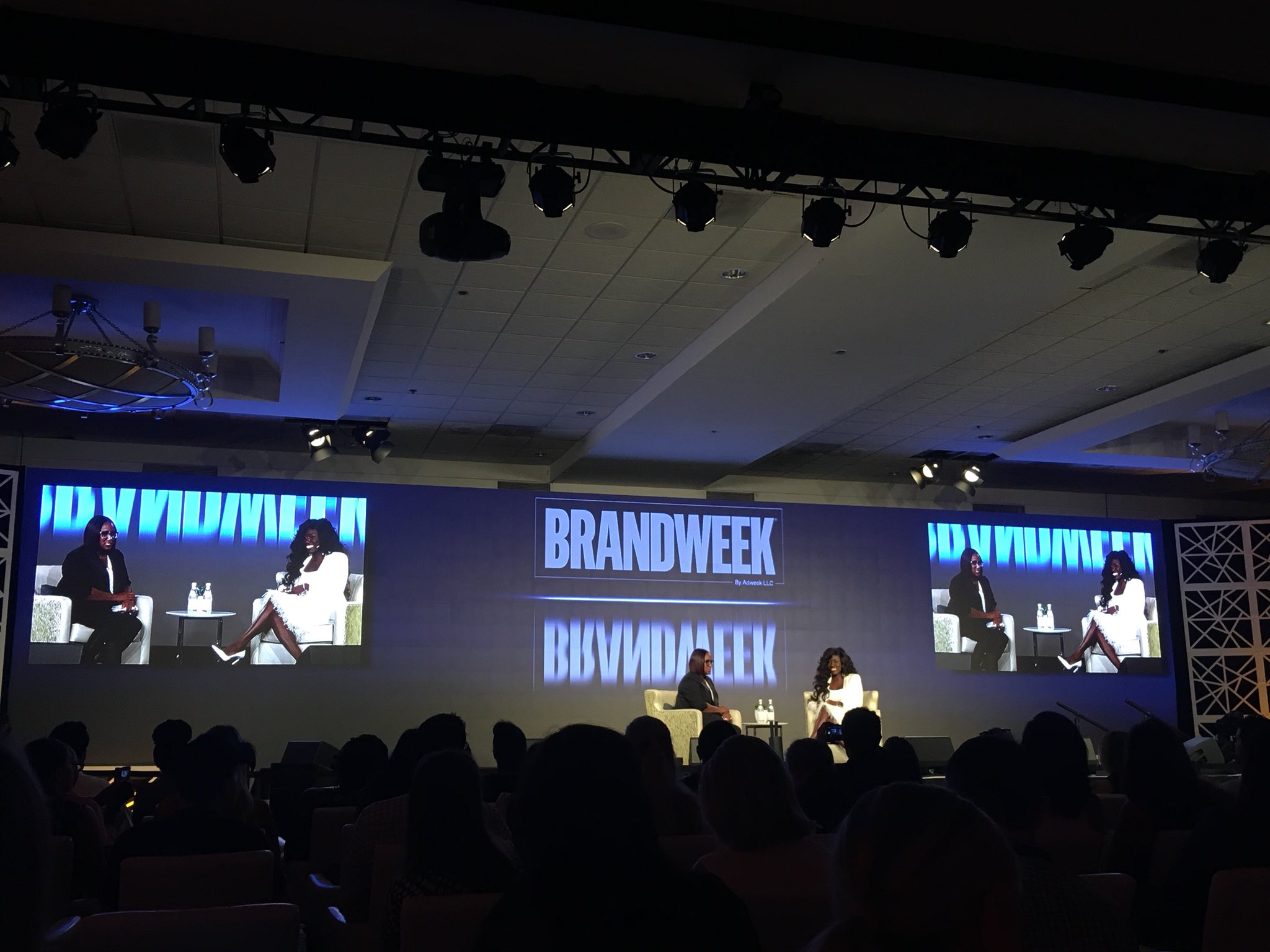
At the inaugural Brandweek conference this week in Palm Desert, CA, I learned a LOT.
I learned that marketers at big brands don’t want to be sold to, but they do want to embrace their brand’s problems — and sometimes even faults, when they are in a safe space.
I learned that the newest brands on the block, like Away, are able to be so consumer-centric, that adding in an agency wouldn’t have a bigger impact than what they’ve built internally.
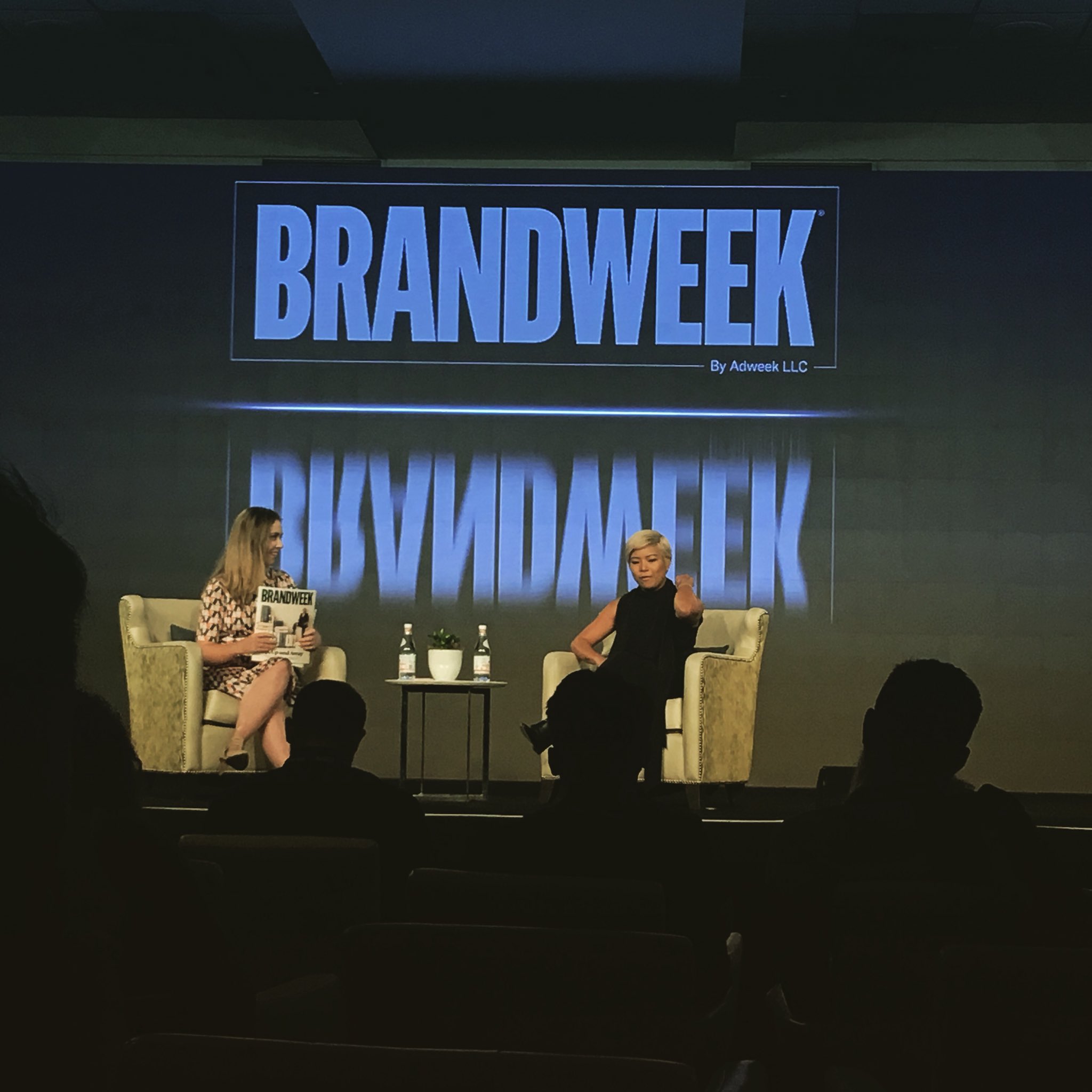
I learned that everyone who works in marketing is always going to be chasing the next ad tech and working hard — like, really hard — to explain that to anyone who will listen.
I learned that there are so many things I would have never learned if I hadn’t made the time to get out of our office and see what everyone else is talking about.
But today, I want to talk about something that all agencies need to learn. If you are an agency, and you aren’t focused on the value you provide to clients, then you are doing it wrong. If you work in an agency and you aren’t focused on the ways you can help brands better communicate, engage and interact with their consumers, the ways you can help them UNDERSTAND their consumer better, than you could take some advice from the people behind the brands that I met at Brandweek.
This was a well-attended conference. Marketers like Rick Gomez from Target, Jen Rubio from Away, Michael Dubin from Dollar Shave Club, and Leesa Eichberger from Farmers Insurance were in the audience and on the stage talking about what ground they are breaking and what problems they are facing. I even got the opportunity to sit next to Victoria Russell, the Chief Diversity Officer of Papa John’s, during a workshop. Yes, she knew about the scandals before she took the job, and yes, I believe she will be the person to turn that brand around.
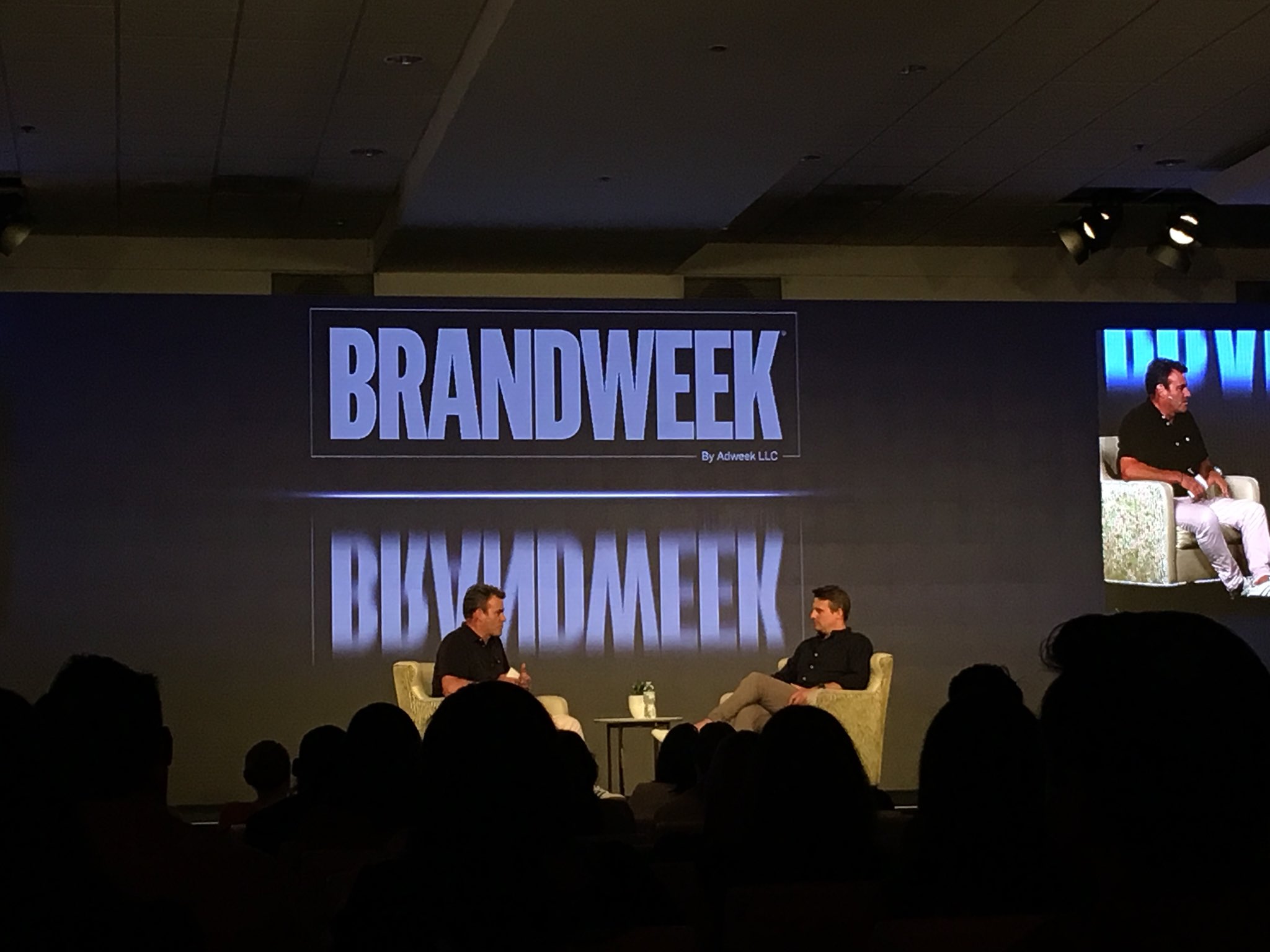
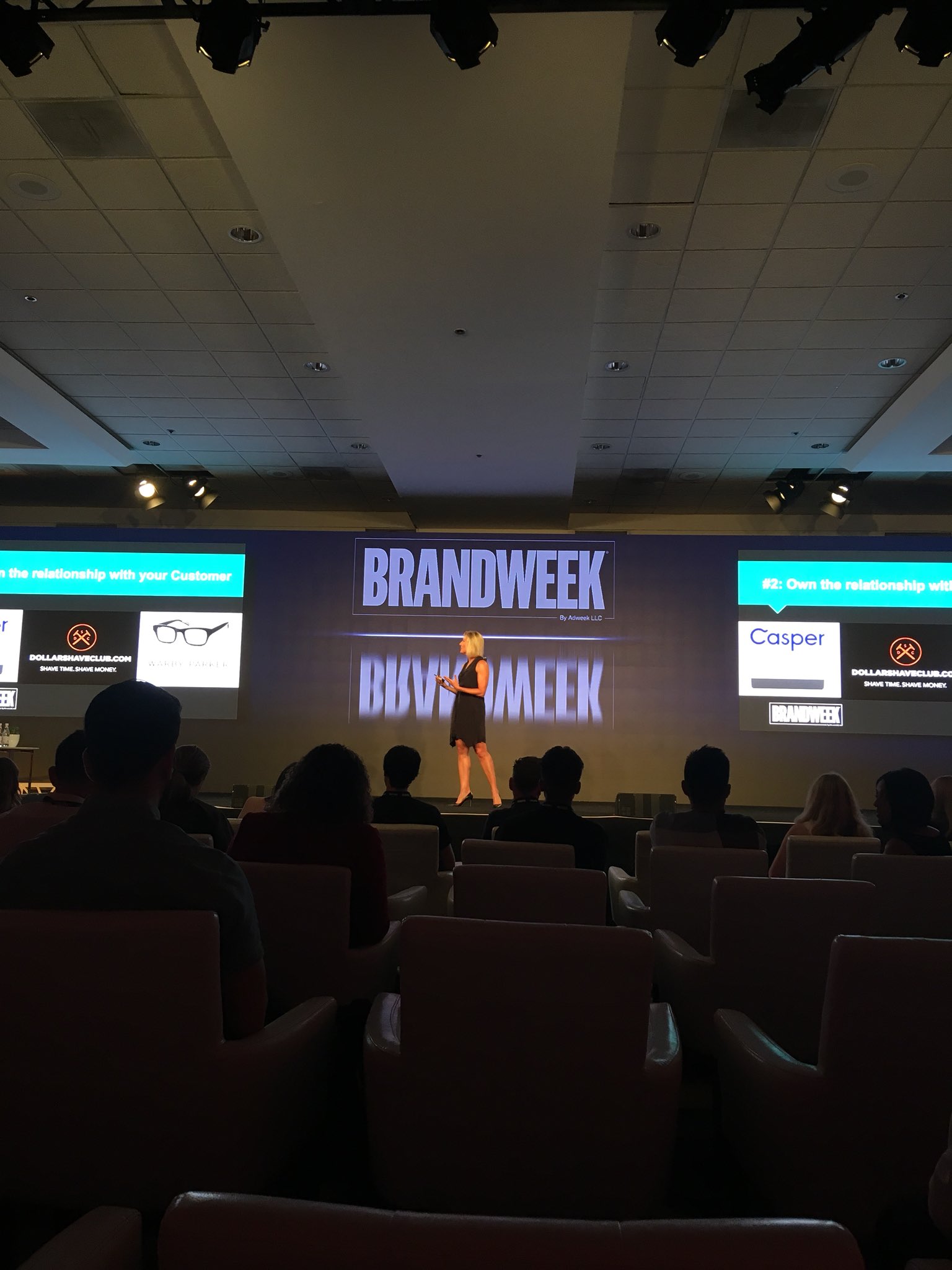
Between the varying degrees of brand awareness and brand loyalty, the thing that everyone had in common was the fact that they are all SO laser-focused on their consumer. What is their experience? How do I draw them in? How does their feedback shape my product lifecycle? How does their feedback save my business?
We got to hear about all of these issues from the marketers themselves, but even better, we got to work through them together during two different break-out workshops. People were asked to connect on issues and topics like “collaboration” and “the brand’s role in society.” They were asked to think about new media opportunities and new technology that could solve problems. And then entire rooms of people got to connect on those issues and problem-solve together.
So, what did I learn that I will take back to my team that I think will REALLY make a difference? It’s all about the consumer.
At DiGo, this isn’t a new idea. We’ve worked alongside inspiring action companies for over two decades, and each time, we’ve placed the consumer at the center of everything we do. Inspiring action companies know the importance of “learning what your devotees love about themselves with you”.
This is what we do for our clients, even when they don’t realize it. It’s our focus on this that allows us to truly act like a brand-and business-building partner to our clients. It’s what turned Weight Watchers around, and what led HelloFresh to outpace Blue Apron in the meal-kit delivery wars of 2017. It’s what re-launched Reader’s Digest, and what is behind the work we’re doing for the Partnership for a Drug-Free Kids and Salesforce.org.
It’s Inspiring Action.
By
James Nieman | 10/16/2017 | in

From AdAge:
“When ANA President Bob Liodice introduced Weight Watchers head of marketing today, he didn’t hold back when describing just how poorly Weight Watchers was doing in early 2015 – it was “at the brink of irrelevance.” Quite an introduction for Maurice Herrera.
In fact, January 2015 was one of the company’s worst January periods ever in terms of signups, says Herrera, who had joined the company just three months earlier. Timing was crucial, because the first quarter accounts for more than 40% of the company’s business, he notes. People were looking for other ways to lose weight, including wearable fitness trackers and Paleo dieting, resulting in Weight Watchers subscriptions dropping 25 percent year-over-year that quarter, Herrera recalled. Its stock skidded from $25 to $7 per share, he said, and fell even further that summer. Herrera had to lay off about 25 percent of his team of 30 or so people.
Herrera and his slimmed-down team, with agency DiMassimo Goldstein, came up with a more consumer-centric approach. “Since everyone believes that they have a unique challenge, it’s critical for them to look at Weight Watchers and see a bit of themselves in the brand,” Herrera says. “We needed to create a brand identity that felt accessible and relatable as well as aspirational.””
To read the rest of AdAge’s live blog, click HERE.
Last week, Maurice Herrera, the Head of Marketing for our inspiring action client, Weight Watchers, had the honor of speaking at the 2017 ANA “Masters of Marketing” event down in Orlando, Florida.
The event, which boasted over 2,500 attendees, is one of the biggest and best gatherings for senior marketers in the country.
Herrera was invited to speak about the transformative journey that Weight Watchers has enjoyed these past two years. Together, with Herrera and his team, we’ve taken one of the country’s most historic brands and brought them back into the national spotlight, leading to seven consecutive seasons of brand growth. We couldn’t be prouder to be their agency.
Now that’s #inspiringaction.
By
James Nieman | 06/20/2017 | in

Facebook is thirteen years old.
So it’s not exactly breaking news that we live in a direct-led and socially connected world. We’ve been living in it for over a decade now. It’s not going to change our lives; it already has. The way we talk. The way we think. The way we act. As people. As consumers. And, for those paying attention, as brands.
Even the line between brand and consumer is becoming blurred. With brands like Lyft and Airbnb, the platforms themselves have become communities where brand values and benefits are communicated through daily interactions, rather than through headlines. Actions, not ads, have become the coin of the realm.
46-inch TVs sitting in living rooms have become 7-inch smartphones constantly moving. From couch to desk to coffee shop to grocery store. From Facebook to Twitter to YouTube to Instagram to Snapchat. Seamlessly. “Word of mouth” has become “likes,” “shares,” “comments,” and “snapchat follows.”
People are literally carrying your brand around in their pockets. So it makes sense that marketing has become more personal. Now, more than ever, people want to be a part of the brand. They expect to have a voice.
And this is why we invented The Selfifesto® – a new and innovative co-creation process that puts your brand’s most devoted fans at the center of the process to bring the brand truths to life.
Tapping into today’s selfie-culture, we ask brand loyalists to record videos of themselves on their smartphones. Then we package the video into an ad where they become the stars. We provide the brief, strategy, concept, scripts, and editing, but each consumer is their own director, actor, and camera operator. An ad co-created between the brand and consumer. It’s not just our campaign; it’s theirs as well.
In return, the brand develops a greater understanding of their target audience, increasing customer satisfaction through the back-and-forth interaction. A community is built, and engagement is only further intensified when the superstars themselves spread the spots online.
It’s an experiment we first tried with WeightWatchers a few months back, and then again with Affinity Federal Credit Union. Real customers with real stories… a celebration of their success with the brands, all for a fraction of typical production costs.
No one knows your consumers better than they know themselves, and when you give them the voice they want and invite them to join the conversation, some amazing things can happen. Remember, a brand is not what you tell people it is. A brand is what people tell people it is.
If you want to learn more about how we can do this for you and your brand, we’d love to talk. Email tom@digobrands.com for more on The Selfifesto®.
By
Team DIGO | 10/07/2016 | in

I’ve noticed that people are surprised when some companies dramatically outperform other companies…
when they grow both revenue and brand value…
when they disrupt and then dominate their categories…
and when they sell or go public at phenomenal valuations…
But I’m not surprised.
I’ve studied those companies intensely for years. I’ve learned directly from the top decision makers exactly what they do differently. I’ve made them the focus of my career. And here I will share with you the single most important thing they do…
They define the word “brand” differently.
The great change agents, disruptors, and CMOs who can write their own tickets all have this in common. “Brand” means something very different to Dollar Shave Club, Airbnb, Warby Parker, and Casper than it does to most marketers.
Most marketers – and in fact, most business leaders – still associate “brand” with logos, style guides, naming conventions and brand ads. This is what I call small brand.
Not the big winners. They subscribe to the concept of BIG BRAND.
They understand that the brand, is first and foremost, an experience in the mind of the user. They understand that to manage that brand is their ultimate job; that it is in fact the main purpose of the organization. They understand that to manage that inner experience, they must design and direct all of the external evidence of the brand that the user experiences.
Therefore, these companies think of “brand” as the entire user experience, not just of the product and promotion, but of every touchpoint related to the brand. That’s Big Brand.
Then, in order to organize and change everything about the way the brand is experienced, they think about the brand this way:
• They think about the brand spirit. They get clear about what the spirit of the brand will be. That spirit will transform every touchpoint into a brand experience. For Tesla, it’s visionary, bold and futuristic. For Airbnb, it’s adventurous, social and natively comfortable. For Dollar Shave Club, it’s fun and frank and super-practical.
• They think about the brand meaning. They know that an inspiring idea can organize and change everything for the brand. They know that people want to buy into more than a value proposition; that they want to be part of something meaningful. For Casper, it’s a more rested culture. For Betterment, it’s a world of tech-savvy, smarter investors. For Tesla, it’s a world without smokestacks and rising oceans. For Dollar Shave Club, it’s a club of guys who look great and still have some money in their pockets.
• They think it applies to ALL their communications. Unlike small brand thinkers who often unthinkingly expose more people more often to brand-damaging promotional come-ons that sap the value of the brand, Big Brand thinkers view everything they do as part of the user experience, part of the brand. They generate more sales, more efficiently, by thinking brand response rather than direct response. In brand response, the brand insight makes customer acquisition more efficient while it builds brand value. The better it works, the more the company can afford to do. The more the company can afford to do, the more it sells and the more valuable its brand is. It’s a virtuous cycle. The opposite of the one that kills the small brand goose.
• They design phenomenal fulfillment experiences. Brand experience design is a mindset that pays huge returns. And it doesn’t have to cost a lot of money! It’s shocking to us that so many companies just deliver in a normal envelope or a cardboard box. It’s crazy that they don’t see their trucks, boxes, crates, envelopes, cards, keys, bags, packaging and even invoices as inspiring brand experiences ready to happen. We are appalled at the enormous waste of owned and tightly targeted media that is underutilized. Casper puts a whole mattress in a box – a story with every delivery! Dollar Shave Club includes Bathroom Notes with every well-designed delivery, mastering their brand domain. Our boxes for Gateway had spots, and you could see them from two blocks away. Our FreshDirect trucks became popular rolling billboards and backdrops for a million selfies. From our logo to every element of delivery packaging, we worked with our brilliant friends at HelloFresh to make every surface and gesture speak the brand. This year, we evolved Weight Watchers’ Starter Kit from a concept to an actual kit, and both recruitments and member results improved dramatically!
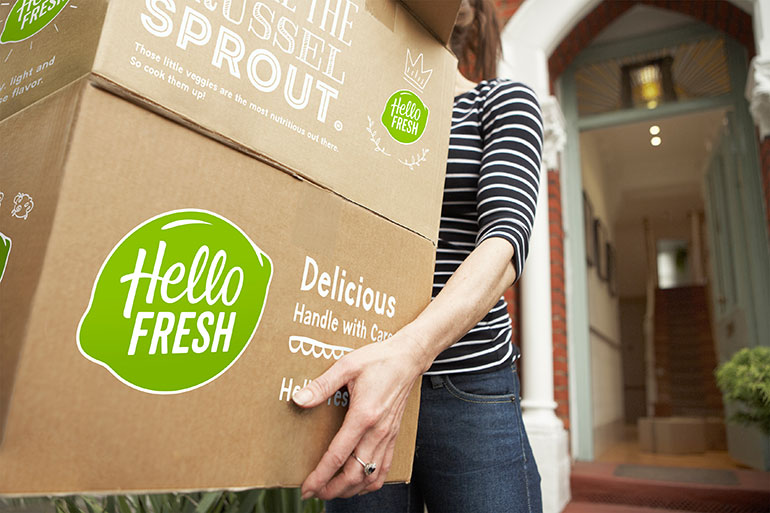

• They think about how media creates powerful brand associations. So, in addition to effectively increasing their media budget by 15% or more by insisting on transparent, accountable media, they also use a balanced scorecard for optimizations. This makes both acquisition efficiency and brand association central. It also includes location and purpose to, again, better align to the experience of the user.
• They think about being and doing the brand, not just marketing and promoting it. Because they know that today, everyone is connected to the true word-of-mouth about products and brands, they know that what they do and what they are means more than what they say they do and are.
And yes, they view the people who interact with their marketing as users and friends, rather than “targets” or even “audiences.” They know that today, people are trying to use our marketing and our brand to make meaningful and lasting changes in their own lives. Big Brand thinkers know that’s what we’re here for.
If this concept of Big Brand intrigues you, you may want to check out this roadmap. It’s the same one we use for smaller companies with smaller budgets to build dominant, category-disrupting big brands. It’s the same roadmap we use to help big companies to turn the ship around and succeed in our mobile-and-social-acquisition-driven marketplace.
I’d love to talk to you about Big Brand, Brand Response and Inspiring Action companies. Please don’t hesitate to reach out to @MarkDiMassimo or mark@digobrands.com.
By
Team DIGO | 09/16/2016 | in
By Tom Christmann,
A lot of our clients here at DiMassimo Goldstein are direct-model. I know. I know. That sounds awful, right? That word — “direct!” — strikes fear in the hearts of us modern marketers. But that’s because many of us are thinking about it from the wrong side. Sure, direct-model brands sell directly to consumers. And they have for hundreds of years. This has led to some of the worst advertising in the history of advertising. The Snuggie. The Clapper. Encyclopedia Brittanica.
But think about direct-model consumers. The ones who keep coming back, that is. They are more apt to feel like they’re part of the brand. Like they’re in a club. Maybe it’s a Dollar Shave Club. Or maybe they’re season ticket holders to a sports team. (Yes, sports teams are direct-model businesses.) Or maybe they’re Tesla drivers. Or BMW drivers.
Direct-model consumers are also more willing to want to be a part of the marketing message. In fact, they take it upon themselves to be a part of it. On YouTube. On Instagram. On Twitter. And, while you can’t script what they say, you can harness them to craft the right message for prospects who might be just like them but haven’t tried your brand yet.
That’s just what we did for Weight Watchers this year. They wanted to celebrate their members losing 15% more weight on the new Beyond The Scale plan. But more importantly, they really wanted people to notice that there was a new Beyond The Scale plan. So we sent out a package to key members. In it was a rough script based on things we’d heard on the internet: How the change to the new plan was scary. And how at first they didn’t like it. And, finally, how it worked. Of course, we didn’t force them to read the script. We also asked them to tell their own weight loss stories. And to tell us what foods they loved the way Oprah famously loved bread.
Were we crazy? We were asking a bunch of non-directors to film themselves using smartphones and webcams. We had no idea what we’d get back. We even asked them to capture footage of themselves doing exercise and cooking healthy foods. This is what production companies call “B-Roll” because it generally goes under voice-over and is used to give the film a wider range of visuals. Were they ready for this?
Of course, we had cast real consumers before. We had made documentaries about them. We had done testimonials. We had even used phone interviews as the voiceover on a campaign with real traders for our Tradestation client. But we had never handed over the whole production to them.
But guess what? It worked.
Weight Watchers – It Worked :30 from DiMassimo Goldstein on Vimeo.
Not only did they know how to frame the shots and do multiple takes (thank you selfie culture), they loved every minute of it. In the end, we had a spot featuring real consumers (some were even famous YouTubers) that actually felt real. We had people sharing and liking the spot because they recognized friends and people they followed on social media. And it literally cost zero dollars to shoot. Zero dollars. Best of all, when we edited it together with music, it truly felt like the celebration of real success we had always wanted.
We started joking that maybe we had created a new genre of ad. But what would we call it? Ladies and gentlemen, DiMassimo Goldstein presents: The Selfifesto®!
So, how are you engaging your customers in your advertising? Let’s chat. Email me at tom@digobrands.com










